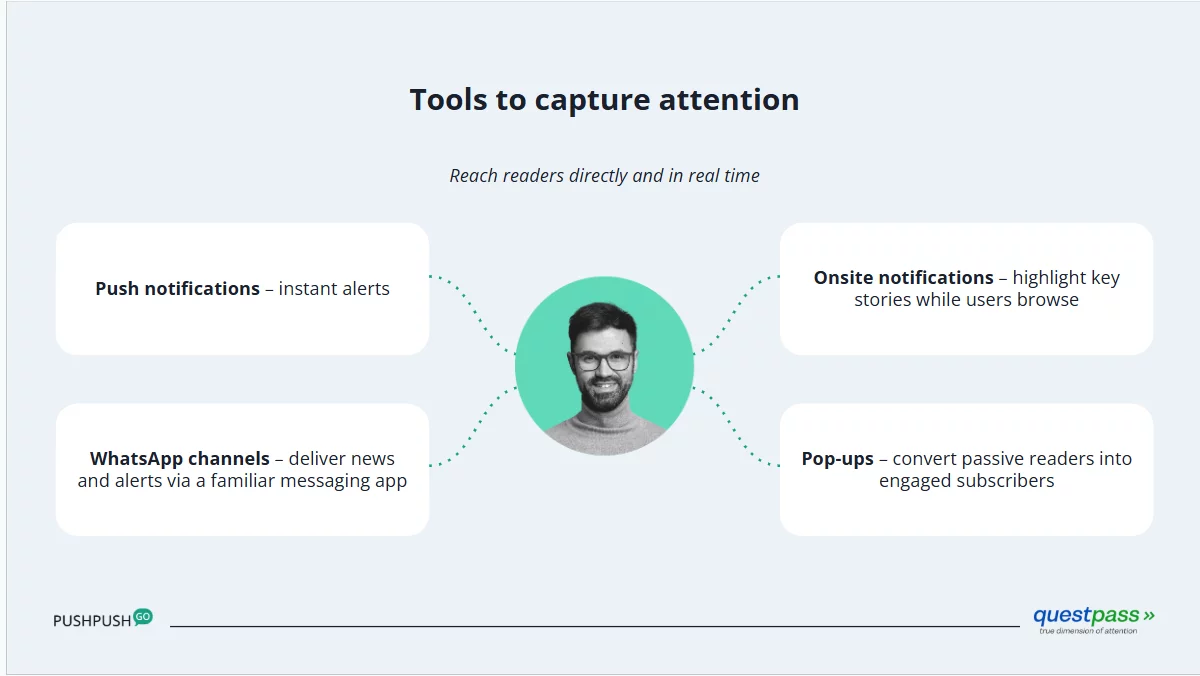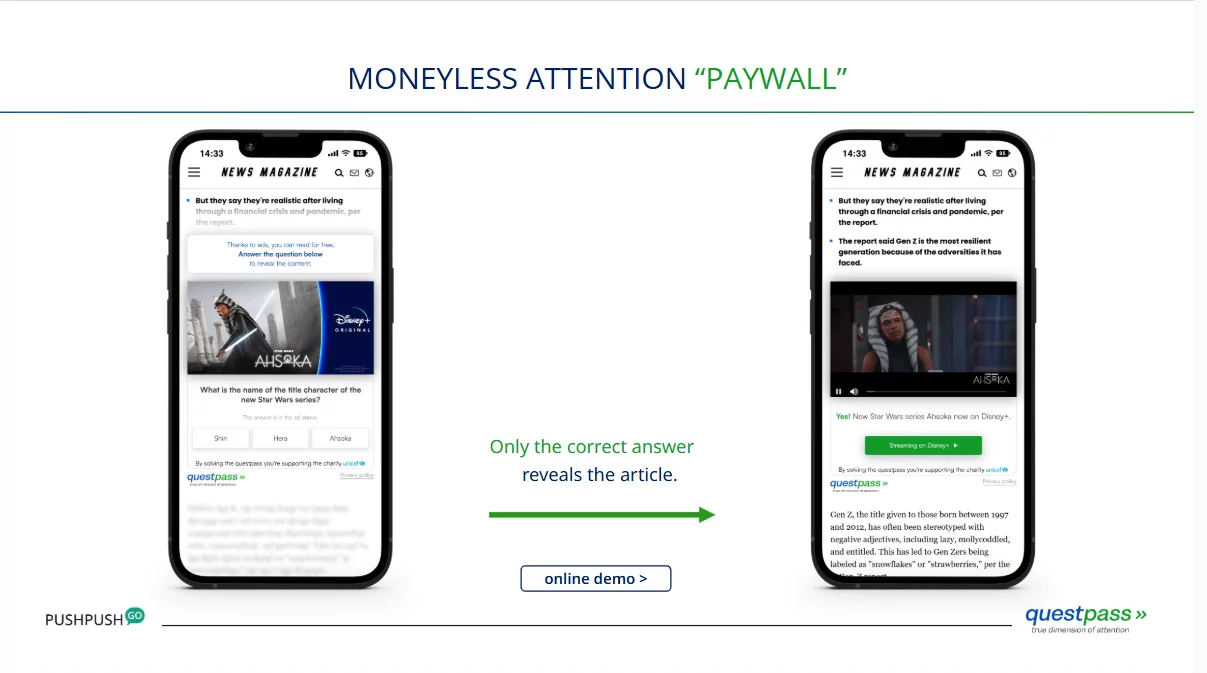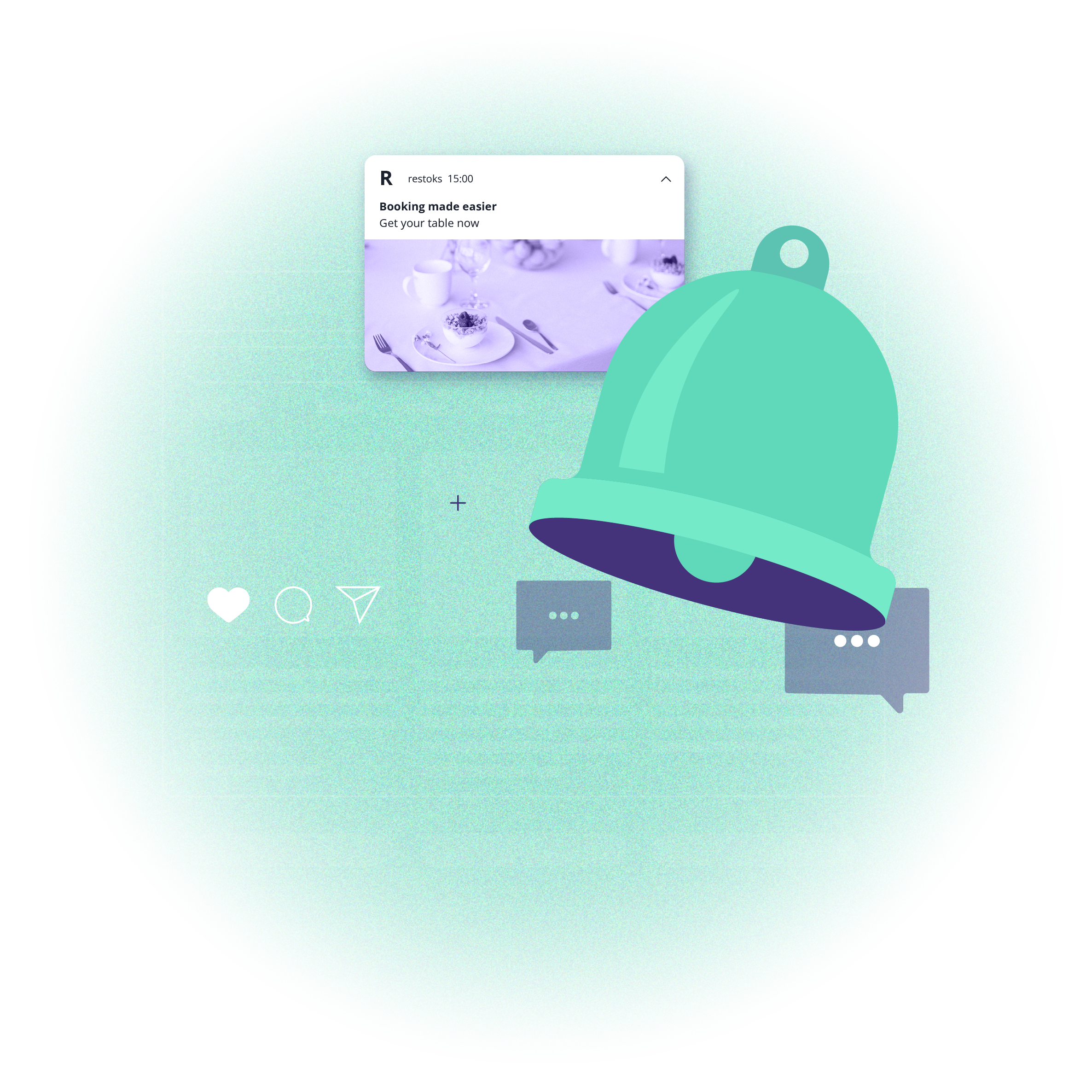It’s all about readers’ attention – how to catch and monetize it?
 Aleksandra Kozioł
Aleksandra Kozioł-evudubkwtf.webp) Urszula Salawa
Urszula Salawa-3d8jqxhvln.webp) © by PeopleImages from Getty Images Signature via Canva Pro
© by PeopleImages from Getty Images Signature via Canva ProAt a time when a reader’s attention span lasts less than eight seconds and website traffic drops reach 30%, publishers must look for new ways to attract and keep their audiences engaged. Creating valuable content is no longer enough. You need specialized tools to build relationships and effectively monetize user attention.
PushPushGo helps publishers maintain contact with readers through intelligent web push and onsite notifications. Questpass, on the other hand, introduces a new dimension of advertising, where the user “pays” with their attention and the publisher gains higher revenue from genuine engagement.
Attention spans of online readers
The average human attention span is only 8.25 seconds, which is less than the goldfish's 9-second attention span. It has decreased significantly over the years, from 12 seconds in 2000 to 8 seconds in 2013.
It has some very dire consequences, given the complexity of some of the events being reported on. It also doesn’t help publishers who rely on visitors spending time on their pages and generating revenue from ads, subscriptions, and other forms of monetization.
So, what can publishers do to keep the visitors on their pages longer? Many have declared investing in more content types. Those include a variety of interactive experiences.

Source: Reuters Institute for the Study of Journalism
There’s no surprise that The New York Times’ game app with the famous Wordle puzzle has brought a rise in subscriptions to NYT. The “come for the games – stay for news” brings better retention across the entire platform.
But here we are talking about one of the biggest publishing brands in the world, with a product bundle consisting of multiple titles and features. How about your publishing website? How can you build an engagement that lasts and transforms your reader’s experience?

Bringing readers back when they’re off-site
The first thing you have to consider is how you’ll get users to visit your website. Yes, there’s the matter of offering them the best content on the subject that’s interesting to them. We can also mention SEO and GEO optimization, Google Discover ranking, and social media presence.
But your best readers – the ones we’d like to focus on – are returning guests. And in order to bring them back, you first have to establish contact with them. Ask them for a newspaper subscription or push notifications opt-in. Then, using web and mobile push, you can:
Send breaking news alerts using the Rocket Push extension and Multi Push.
Inform them about new content on their favorite subject via targeted push campaigns,
Help them make the best of their subscriptions with automations.
To achieve the best results, remember to optimize your push campaigns:
Set expiration dates
Add Require Interaction
Use priority sending
Group campaign by topics
Use follow-up campaigns
Set up capping
Target campaigns based on subscriber interests, preferences, or created segments
See how Večernji.hr achieves stable engagement.
You can also use WhatsApp. The most popular communication app in the world offers Channels as a medium to communicate with subscribers. The most important characteristics are:
WhatsApp Channels is an opt-in solution.
Phone numbers of senders and recipients are kept anonymous.
WhatsApp Channels keep the data about senders and recipients hidden.
Grabbing attention when the reader is on the site
This is the tricky part – but also the part that brings you the biggest traffic and makes them come back for more. We’ve already talked a lot about pop-ups and onsite notifications in our other articles.
Learn about targeting options for pop-ups and onsite notifications.
See the best use cases and solutions for the publishing industry in our ebook.
There are some rules of thumb to follow:
Be selective – highlight only the most important updates to avoid banner blindness
Personalize – recommend related articles, live coverage, or premium content based on user behavior
Don’t overload – combine pop-ups with onsite banners strategically
Time it right – trigger notifications when they’re most relevant (e.g., while the user is reading, not immediately on arrival)
Test and adjust based on engagement
And now that you’ve brought the reader to your website and even got them to scroll and click through your content, how can you monetize their attention?
How to monetize reader attention effectively?
In recent months, many publishers in Poland and Central and Eastern Europe have lost more than 30% of their traffic, mainly due to changes in Google’s policies and the rise of AI overviews. This is not a temporary fluctuation, but a new reality confirming that the old business model (reach × number of ad slots × CPM) has simply stopped working.
It’s no longer possible to “make up” for lost revenue by adding more banner ads. Readers don’t notice them, and advertisers fail to achieve their main goal: reaching the user’s awareness.
It’s time for a new economy: the attention economy. Attention itself has become the currency advertisers value most.
The Questpass format is an ad that users actually notice and understand, resulting in over a 20% increase in brand lift. For publishers, this translates into a CPM above 30 PLN, or even 100 PLN when selling the format directly.
Reader sees only one ad and gains access to content without paying real money.
Advertiser pays only for confirmed attention and understanding of the message.
Publisher earns significantly higher revenue from lower traffic.
It’s a true Win-Win-Win model for all sides of the ecosystem.
Questvertising is a solution that can help counter declining subscription revenues. It generates strong income even with a significant drop in traffic. It serves as a middle-ground model — filling the gap between low-margin programmatic ads and paid subscriptions that cause “paywall fatigue.”

How Questpass works:
QuestPass displays only one ad and ensures users pay close attention.
Every quest ad has a question about the ad message displayed above.
Only clicking the correct answer reveals the rest of the article.
It works like a “paywall” but is moneyless – user “pays” with his/her attention.
The Publisher earns from every correct answer – that is, each time an article is unlocked by a user clicking the correct answer.
If you want to learn more, head to questpass.io
Now that we’ve got your attention…
This article is a summary of a webinar we conducted with Urszula Salawa, Senior Business Development Manager at Questpass. There’s more coming – we’re always eager to partner up and share our expertise. If you want to know about our upcoming events, consider signing up for our newsletter or push notifications.
And if you’re ready to start with our offer, register or contact us at [email protected]

Content Specialist @PushPushGo
Editor and writer. She is interested in media and new technologies.
-evudubkwtf.webp)
Senior Business Development Manager @ Questpass
I bring 8+ years experience in adtech, creating performance strategies and major digital campaigns at RTB House, Adform, and Equativ. With experience on both DSP and publisher sides, I help brands and media unlock growth and stronger revenues.
Try PushPushGo to engage and connect with your audience.
Create an account and start testing!





